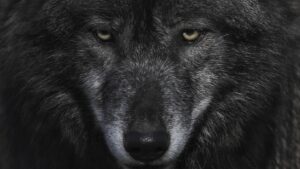Wolves, often shrouded in myth and mystery, have captivated human imagination for centuries. These majestic creatures roam the wild, their lives intertwined with the lore and landscapes they inhabit. As apex predators, wolves play a crucial role in maintaining the balance of their ecosystems, controlling prey populations, and fostering biodiversity.
Galaxy:og4alzgmvog= Wolf
This section explores the unique identifier Galaxy:og4alzgmvog= Wolf, providing insights into its implications and relevance within the broader context of wolf conservation and sport analysis.
Understanding the Identifier
 The identifier Galaxy:og4alzgmvog= Wolf serves as a specific tag used in scientific and conservation databases. It helps in cataloging information related to wolf species across different studies. This systematization aids researchers and conservationists in tracking population dynamics, genetic diversity, and habitat changes effectively. By using a standardized identifier, data retrieval becomes more efficient, facilitating detailed analyses and fostering collaborative efforts internationally.
The identifier Galaxy:og4alzgmvog= Wolf serves as a specific tag used in scientific and conservation databases. It helps in cataloging information related to wolf species across different studies. This systematization aids researchers and conservationists in tracking population dynamics, genetic diversity, and habitat changes effectively. By using a standardized identifier, data retrieval becomes more efficient, facilitating detailed analyses and fostering collaborative efforts internationally.
Characteristics and Phenomena
 The phenomena associated with wolves that are tracked using identifiers like Galaxy:og4alzgmvog= Wolf include migration patterns, breeding habits, and interactions within ecosystems. Wolves exhibit remarkable adaptability, which is evident from their ability to thrive in diverse habitats ranging from the Arctic tundra to temperate forests. Key characteristics such as pack behavior, territoriality, and hunting strategy are crucial for understanding their ecological role. Detailed records enhance the understanding of these characteristics, contributing to more targeted and effective conservation strategies. Tracking these phenomena ensures that interventions are timely and based on robust scientific evidence, aligning with ongoing efforts to mitigate the impact of human activities.
The phenomena associated with wolves that are tracked using identifiers like Galaxy:og4alzgmvog= Wolf include migration patterns, breeding habits, and interactions within ecosystems. Wolves exhibit remarkable adaptability, which is evident from their ability to thrive in diverse habitats ranging from the Arctic tundra to temperate forests. Key characteristics such as pack behavior, territoriality, and hunting strategy are crucial for understanding their ecological role. Detailed records enhance the understanding of these characteristics, contributing to more targeted and effective conservation strategies. Tracking these phenomena ensures that interventions are timely and based on robust scientific evidence, aligning with ongoing efforts to mitigate the impact of human activities.
Theoretical Insights and Scientific Theories
Formation Hypotheses, Studies and Their Findings
 Researchers hypothesize that the unique identifier galaxy:og4alzgmvog= wolf originated from the need for precise tracking and categorization systems in wildlife studies. These identifiers not only streamline the process of data accumulation but also enhance the accuracy of monitoring wildlife populations. Experts use these tags to correlate specific behaviors and traits with environmental and genetic factors.
Researchers hypothesize that the unique identifier galaxy:og4alzgmvog= wolf originated from the need for precise tracking and categorization systems in wildlife studies. These identifiers not only streamline the process of data accumulation but also enhance the accuracy of monitoring wildlife populations. Experts use these tags to correlate specific behaviors and traits with environmental and genetic factors.
Several recent studies utilizing the galaxy:og4alzgmvog= wolf identifier have provided new insights into wolf populations. For instance, a 2022 study revealed significant findings about migration patterns, indicating that wolves in North America adapt their routes based on seasonal changes and food availability. Another study in 2023 focused on breeding habits, showing how certain environmental factors influence breeding times and success rates.
Technological Tools and Observational Techniques
Telescopes and Their Impact
Telescopes, traditionally used in astronomical studies, have found their niche in wildlife research, particularly in observing wolves in their natural habitats. Telescopes equipped with high-resolution capabilities enable researchers to observe wolves from a distance, minimizing human interference and stress on the animals. The ability to track individual wolves over long periods offers invaluable data on their behavior, social structures, and movements across various landscapes. Moreover, the integration of GPS technology with telescopic observations allows for the plotting of wolf migration patterns, which are crucial for understanding habitat utilization and the effects of environmental changes on their populations.
Advances in Digital Imaging
 Digital imaging technology has revolutionized the way field data is collected in wolf conservation efforts. High-definition cameras and drones capture detailed images and videos that are key to identifying individuals and monitoring their health and behavior without intruding into their space. These digital tools assist in documenting physical traits and behaviors that are otherwise challenging to observe, such as nocturnal activities, inter-pack interactions, and rearing of young in dens.
Digital imaging technology has revolutionized the way field data is collected in wolf conservation efforts. High-definition cameras and drones capture detailed images and videos that are key to identifying individuals and monitoring their health and behavior without intruding into their space. These digital tools assist in documenting physical traits and behaviors that are otherwise challenging to observe, such as nocturnal activities, inter-pack interactions, and rearing of young in dens.
Implications for Modern Astronomy and Astrophysics
The integration of advanced technologies like telescopes and digital imaging in wolf research not only enhances understanding of these majestic creatures but also sets a precedent for other fields including astronomy and astrophysics. By employing similar high-resolution tools and methodologies researchers can gather more precise data about celestial bodies. This approach exemplifies a bridge between earthly and cosmic studies showing how techniques used in wildlife conservation can be mirrored in studying the universe. Ultimately these technological advancements pave the way for more informed and effective research across disciplines enriching our grasp of both the natural world and the vast cosmos beyond.

